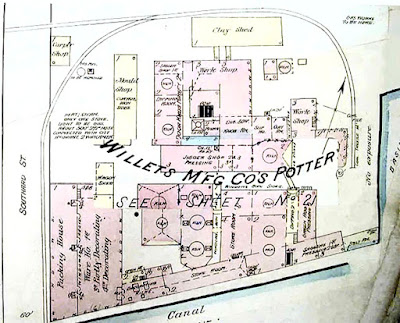 |
Edward Middleton Manigault, c. 1915
|
Edward Middleton Manigault was born in Ontario, Canada in 1887. As a young man he enjoyed drawing and was commissioned by his hometown of London, Ontario to create a series of postcards of local buildings. In 1905 at the age of 18 he moved to New York and enrolled at the Art Students League where he found success under the tutelage of Robert Henri and Kenneth Hayes Miller. Initially Henri encouraged him to paint the city as he saw it but other influences by Miller and Albert Pinkham Ryder moved him away from the world of realism and towards the Post-Impressionist style of Modernist painting. He imbued his work with a spiritual quality that sometimes displayed the underbelly of a nightmare.
 |
Procession, 1911
|
 |
The Clown, 1912
|
 |
Six Women–Adagio, 1912
|
In 1912 he began traveling and working in the U.S. and Europe. He was fortunate to have two paintings– including "Six Women–Adagio," shown above–selected as part of the infamous NY Armory Show of 1913 which introduced Modernism to the United States. By 1914 he had his first one man show in New York.
 |
Catalog to the 1913 Armory Show
|
In 1915 he joined the British Ambulance forces as a driver to fight for his country during the Great War. Unfortunately he served only five months before he was exposed to mustard gas which resulted in a nervous breakdown and a medical discharge from the army. He settled with his wife Gertrude in California and began to experiment with sculpture and painting in abstraction and in the cubist style.
 |
Landscape with Bridge, 1916
|
 |
Vorticist Landscape, 1916
|
Finding the style unsatisfactory he destroyed most of this work–over 200 paintings–and returned to his pre-war work of dream-like surrealism.
 |
Landscape with Field, 1918
|
 |
Manigault's signature
|
In 1918, he painted “Still Life with Flowers.” It’s a highly stylized work owning much to the influence of his teacher Kenneth Hayes Miller. It consists of a table set in front of a dark drape; wine bottle; a vase of fanciful flowers; a bird perched on a basket of fruit; a dish and a majolica compote, all arranged carefully on Eastern textiles. The painting is meant to exist in a three dimensional world yet features a distorted, flattened, two dimensional perspective. This is no doubt a result of his experimentation with abstraction. The use of shadow and color has an other worldly quality to it—brilliant, unnatural color and shading that discards the laws of the realists. The items on the tablescape seem to be illuminated from within instead of by a conventional light source. Although brightly colored, the painting has a slightly sinister quality to it.
 |
Still Life with Flowers, 1918
|
The majolica compote shown in the painting is of a begonia on wicker design. Potted by an English manufacturer, Adams & Bromley, it was part of an extensive line that featured bread plates, tea sets, a cheese bell, ice cream and dessert sets as well at cake stands, butter chips and mugs. To the best of my knowledge it is not a registered design.
Adams & Bromley majolica compote
Adams & Bromley majolica jug
Adams & Bromley cheese bell
Adams & Bromley majolica platter
Adams & Bromley majolica platter
Adams & Bromley majolica creamer
Adams & Bromley majolica jardiniere
Adams & Bromley majolica plate
Commonly found today, the pattern is inexpensive and a good candidate for those who would like to assemble a complete dessert service in majolica at a reasonable price.
Manigault's health was greatly weakened by his wartime exposure to mustard gas. He suffered from depression and often didn't have the energy to work on his art. He struggled with odd jobs in the last years of his life.
 |
Bananas and Apples in a Compote, 1922
|
He died in San Francisco in 1922 at the age of thirty-five. His cause of death was attributed to starvation from fasting and neurasthenia. He believed fasting brought about hallucinatory images he could incorporate into his artwork. He has been called the first martyr to Modernism.
He is buried in his hometown of London, Ontario.
Because of his short life span and propensity towards destroying art work with which he was not fully satisfied, Manigault's reputation faded in the years following his death. Very little of his post war work has survived. His inclusion in the 1913 Armory Show would forever label him as a Modernist though the reality is that he never developed a distinct style of his own, experimenting throughout his life with one influence and another during his most creative period. Manigualt's adult career never fulfilled the promise of his pre-war potential. Still, what remains is sought by savvy collectors of visionary modernist American 20th Century painting.


















































